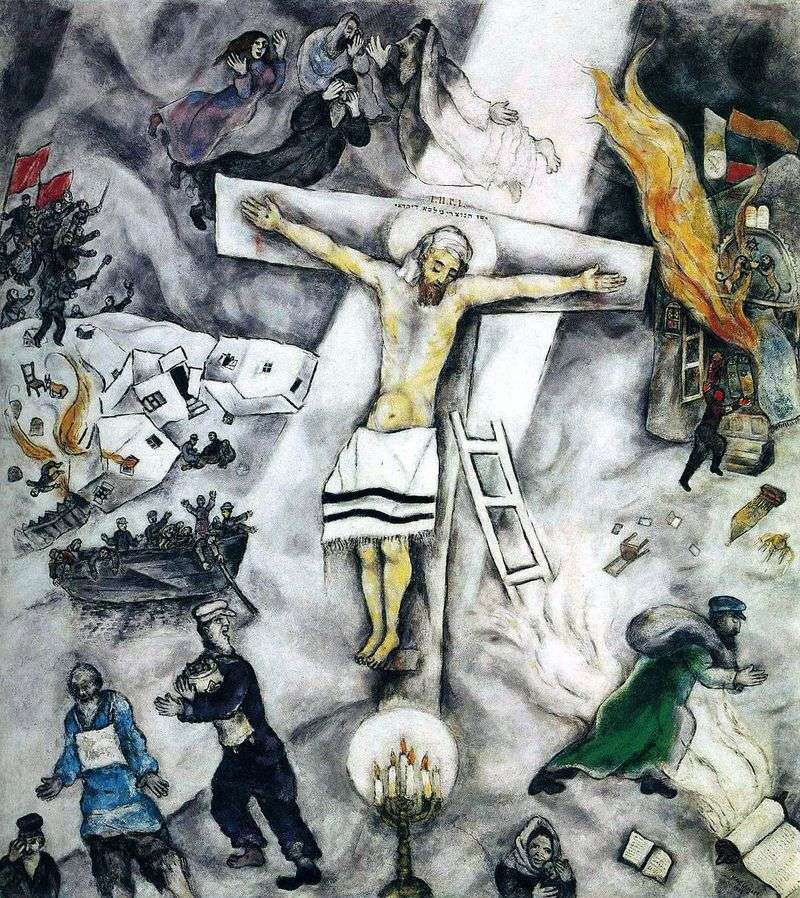 One of the best and tragic paintings of Marc Chagall “The White Crucifixion” was written by the artist after the Jewish pogroms in Germany, which went down in history as “Kristallnacht”. As a Jew, Chagall deeply experienced the political situation in Europe, dictating outright anti-Semitism.
One of the best and tragic paintings of Marc Chagall “The White Crucifixion” was written by the artist after the Jewish pogroms in Germany, which went down in history as “Kristallnacht”. As a Jew, Chagall deeply experienced the political situation in Europe, dictating outright anti-Semitism.
A very short time will pass, and the painter himself will hardly escape the concentration camp, and therefore it is not surprising that many of his paintings of this period reflect the horrific reality of the Holocaust. It is noteworthy that as a Jew, the artist chose the image of the crucified Christ on the cross as the main symbol of the tragedy of the Jewish people. The suffering Christ embodies the suffering Jews in Chagall – the attentive viewer will immediately find hints of this identification.
On the head of Jesus there is not a crown of thorns, but a tales, an element of the prayerful attire of the Jews, and the seven-candle-light of the minor burns at the feet. At the bottom of the cross Chagall depicted scenes of Nazi excesses, and above the picture are the Old Testament characters who cry from the horrors of what they saw. The figure of the wanderer in green vestments was taken to be interpreted as the prophet Ilya, and the ship-ark, as a symbol of possible salvation. Also in the picture you can see the red communist flags and the flag of an independent Lithuania.
Deeply tragic story in the lower left corner of the canvas – a Jew with outstretched hands. On his chest, we see a white tablet, which previously represented an inscription in Yiddish: “I am a Jew.” But Chagall decided to paint it, as well as a swastika on the sleeve of the Nazi burning synagogue. The accusatory picture “The White Crucifixion” was a premonition of even greater destruction and inhuman murders, and produces an incredible strong impression. The curious fact is that this is the favorite work of the Pope of Rome Francis.
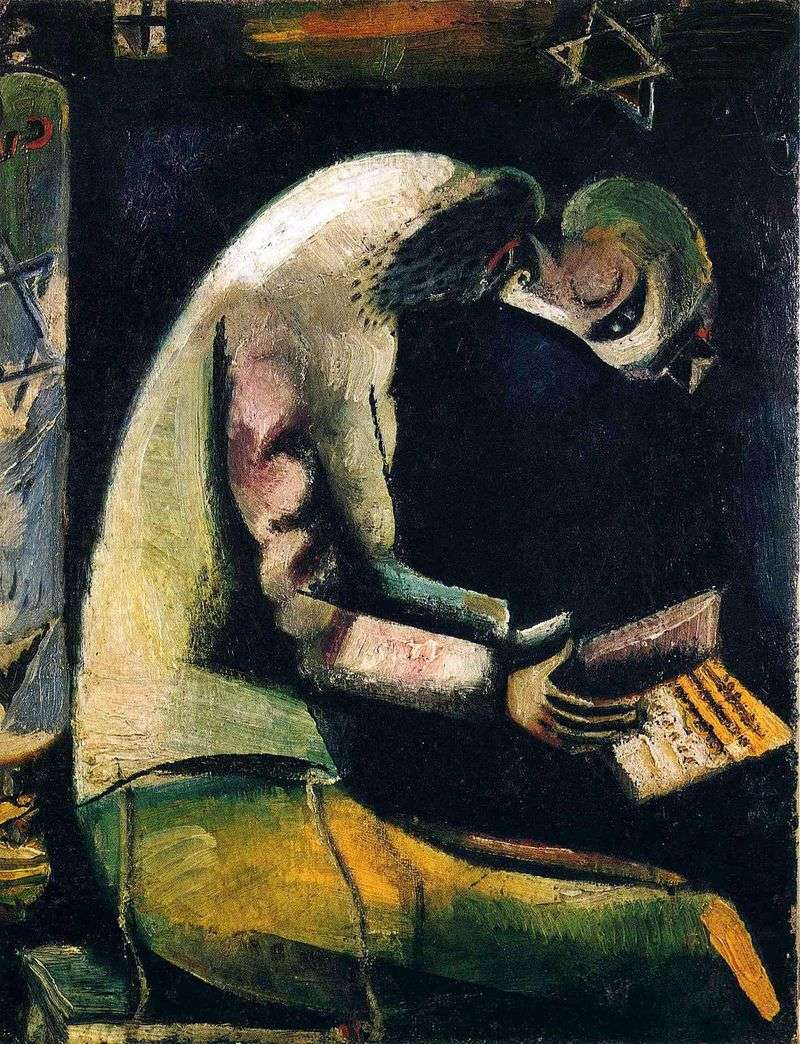 The Jew for Prayer by Marc Chagall
The Jew for Prayer by Marc Chagall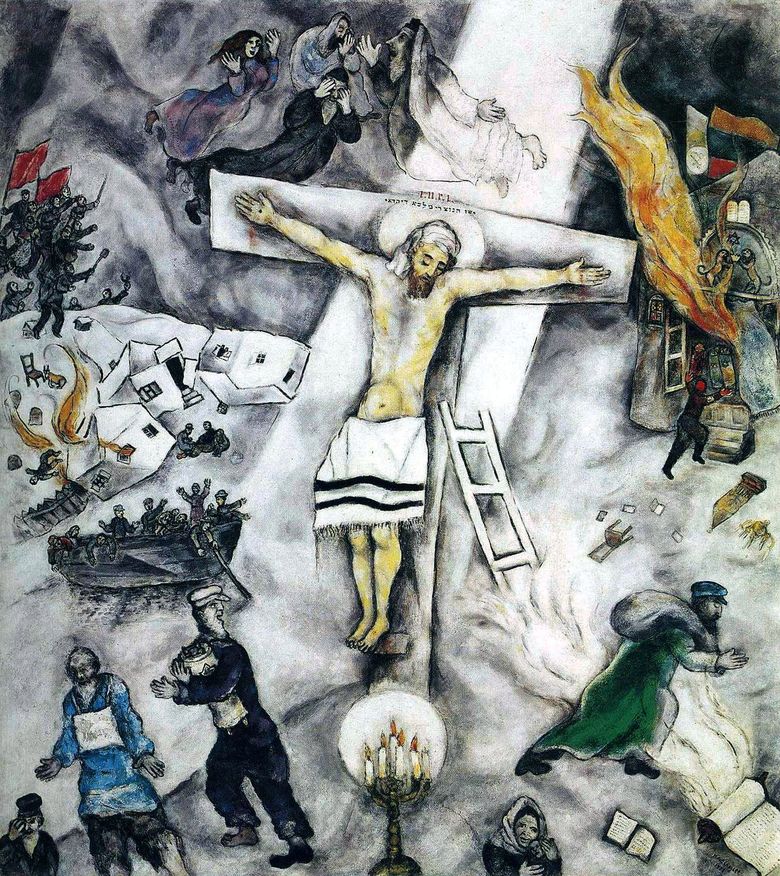 Crucifix blanc – Marc Chagall
Crucifix blanc – Marc Chagall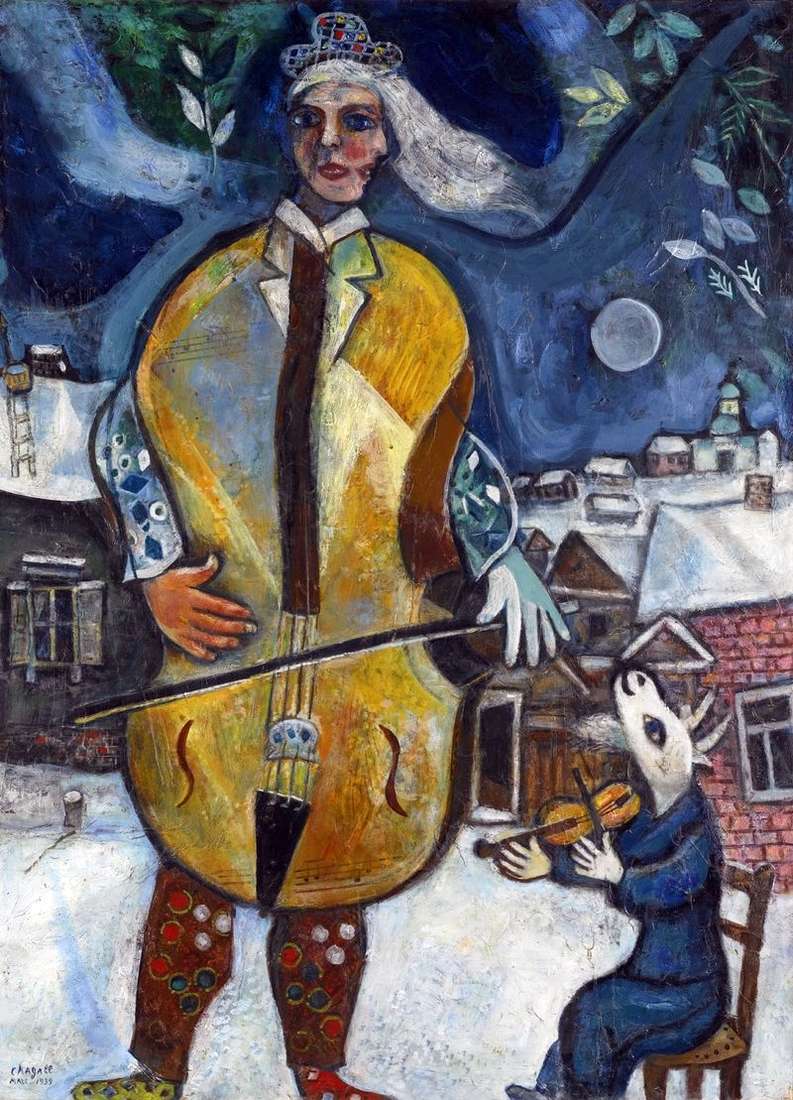 Cellist by Marc Chagall
Cellist by Marc Chagall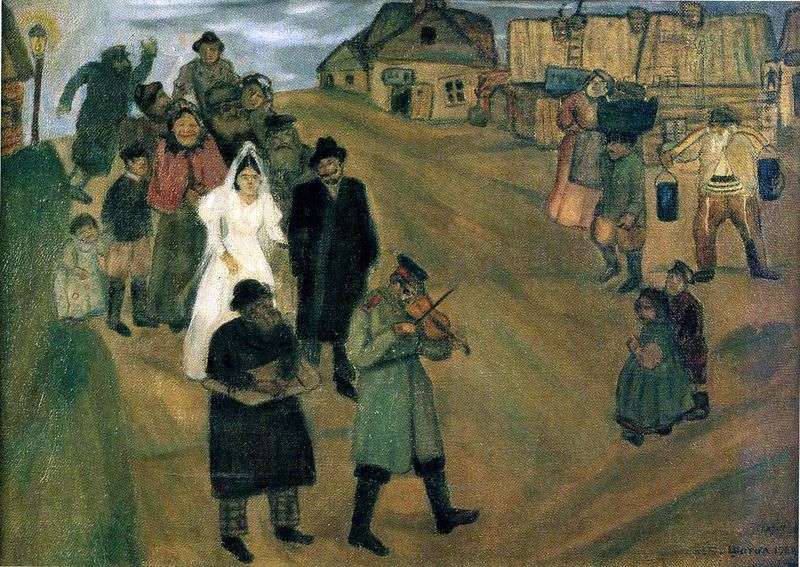 Russian Wedding by Marc Chagall
Russian Wedding by Marc Chagall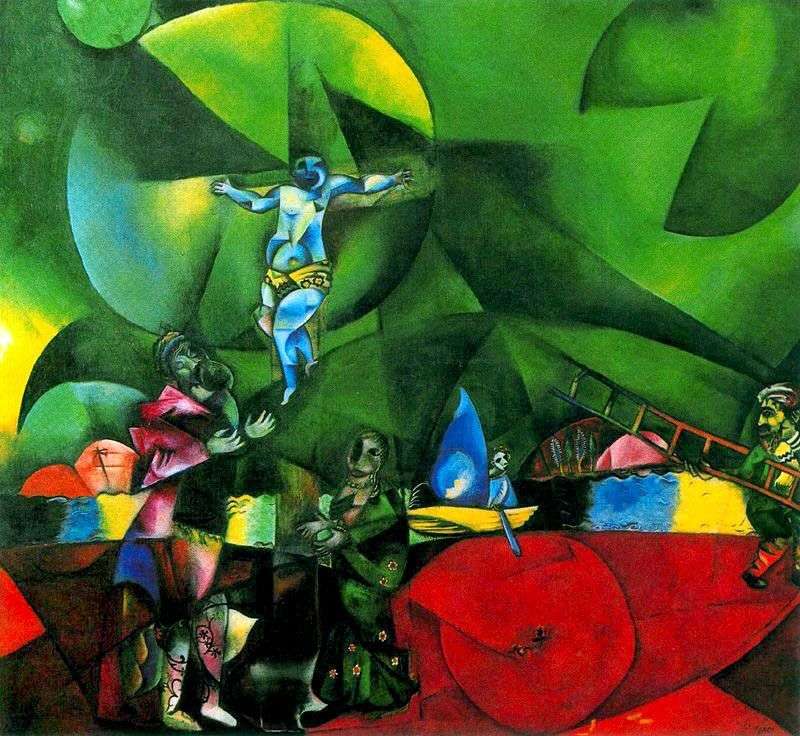 Calvary (Crucifixion) by Marc Chagall
Calvary (Crucifixion) by Marc Chagall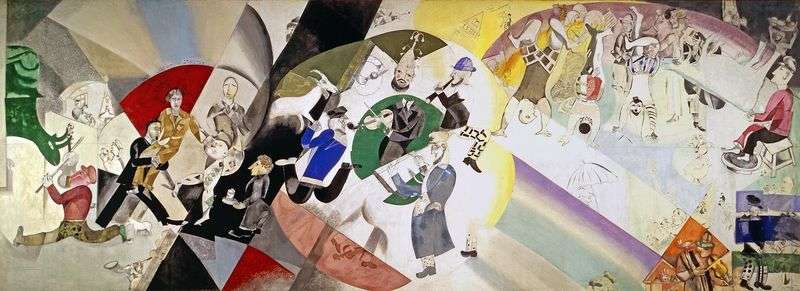 Introduction to the New Jewish Theater by Marc Chagall
Introduction to the New Jewish Theater by Marc Chagall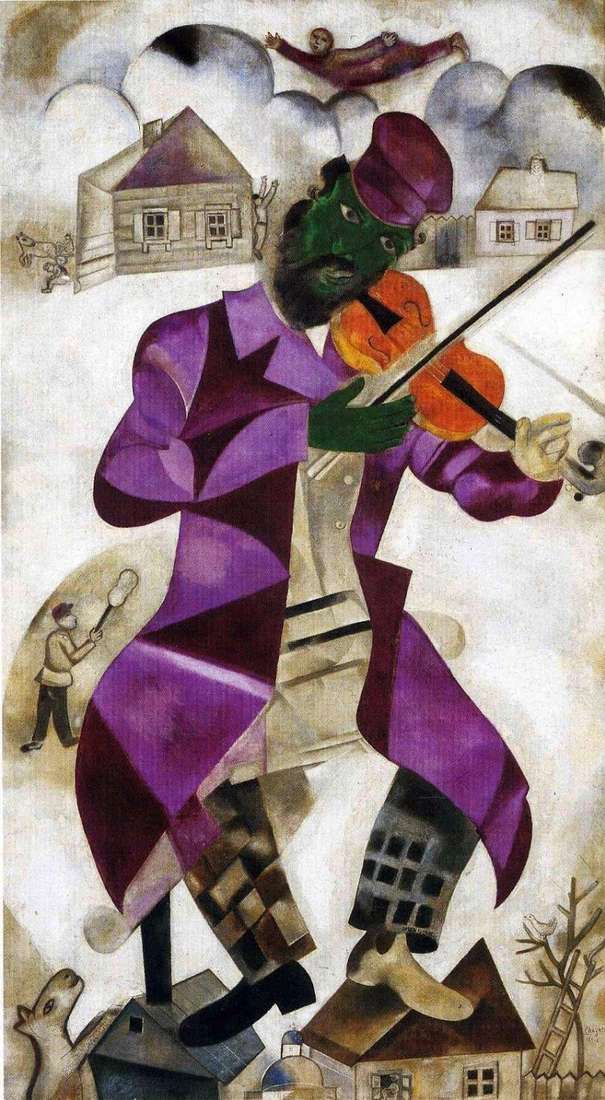 Green violinist by Marc Chagall
Green violinist by Marc Chagall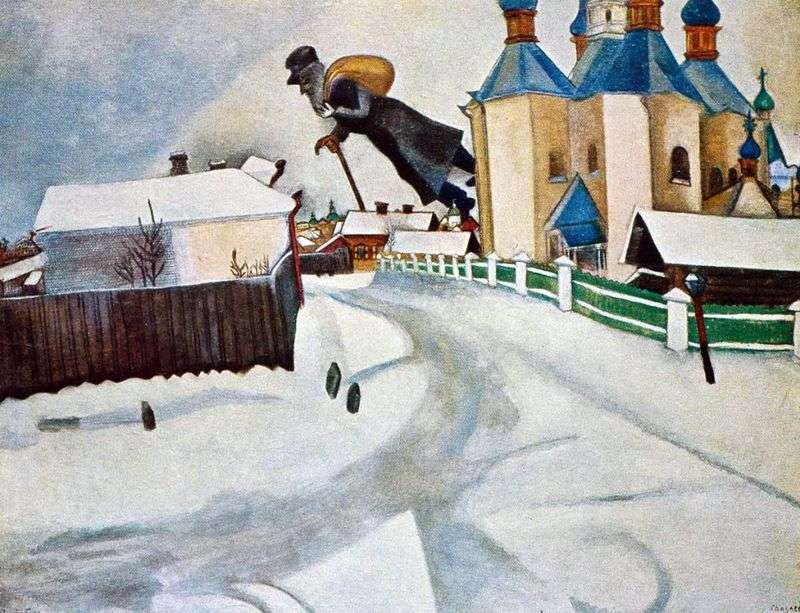 Above the Vitebsk by Marc Chagall
Above the Vitebsk by Marc Chagall